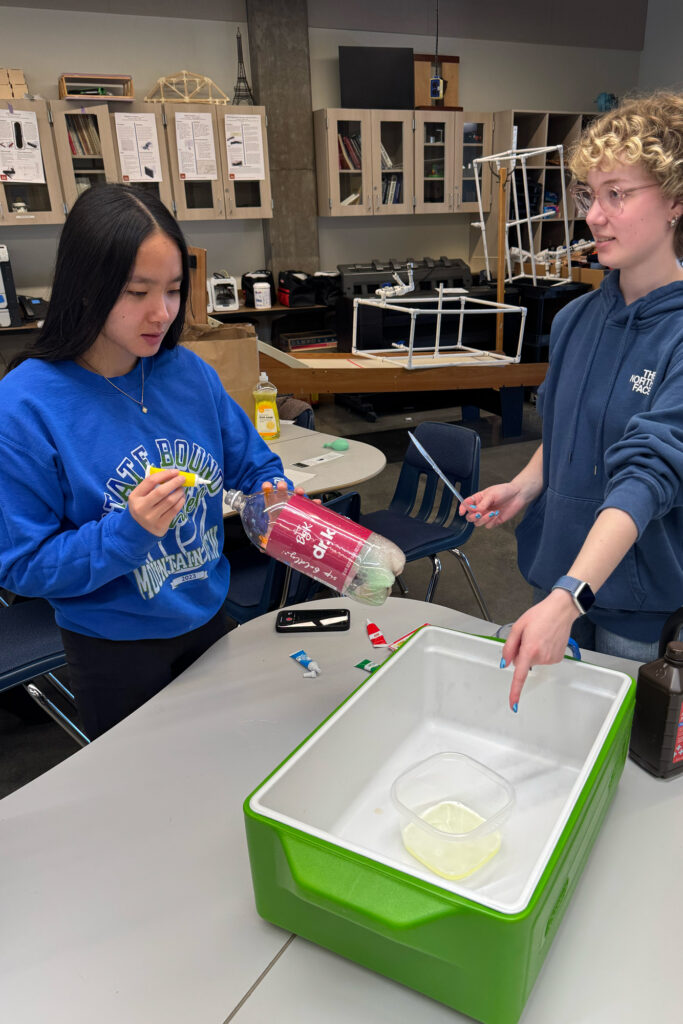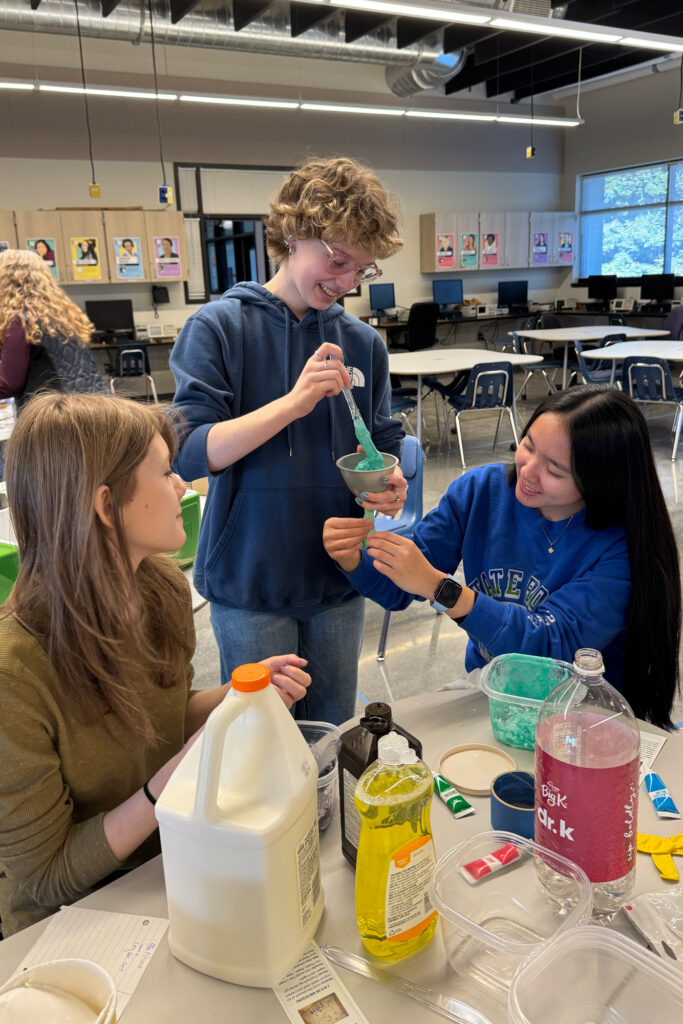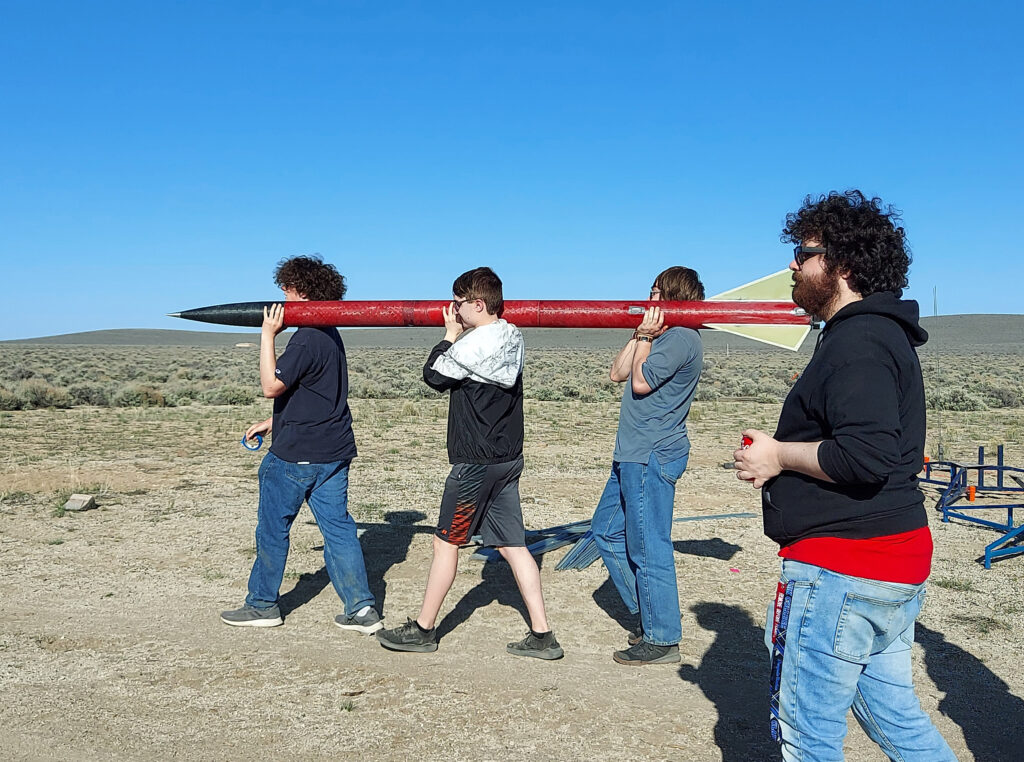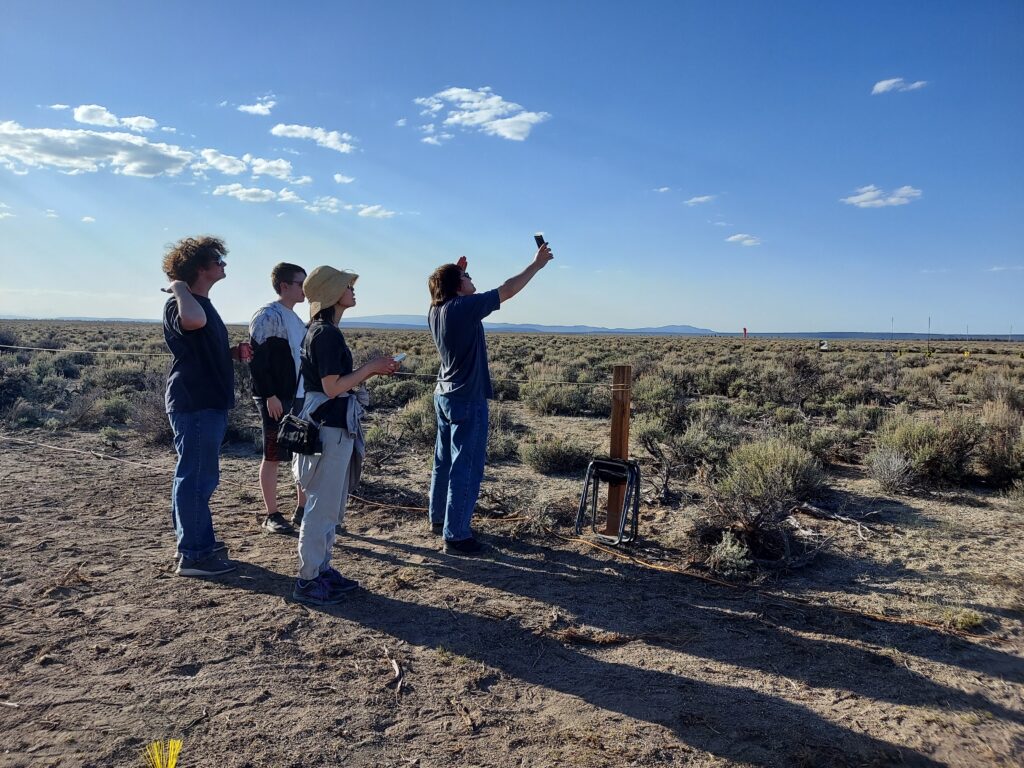NERD Girls and GEEKS Gather in Experiment Social

The NERD Girls and GEEKs, an ASCC student program, hosted an “experiment social” on Tuesday, January 28 in the STEM Building Collaboratorium, inviting the Clark STEM community to come together to hang out and explore by doing hands-on science experiments. The student-led club is directed by professors Tina Barsotti and Carol Hsu.
At the social, attendees created stress balls, made wildflower seed paper, and “elephant toothpaste,” (using dish soap to trap oxygen gas bubbles and create a foam that looks like toothpaste). Some projects were more successful than others, but the students kept trying and approached the experiments in different ways to achieve better results.
Professor Barsotti said, “The best part of the social experiment was how it brought students together for hands-on experimentation—proving that failure is just part of the journey in science and engineering. One student thought they had made a mistake when making their stress ball, but upon completion, they realized it was exactly what they intended.”


According to its mission statement, the student program “strives to provide opportunities for diverse learners to achieve their educational goals by promoting social connectedness through peer support, volunteering, professional interaction, and mentoring. By providing these opportunities, the program encourages students to continue their path in the STEM fields.”
This mission can be summarized by one student’s answer to the question: “What do you like about the club?” The student smiled, pointed at her friend, and said, “Well, I met her.”
Clark NERD Girls and GEEKs hosts events throughout the year. Last December, they hosted the Second Annual Free Holiday Market that gives students and their families an opportunity to shop for holiday gifts for their families and themselves—for free. Read more about that here.
Learn more
NERD Girls posts about upcoming events on its Instagram. You can also reach out to Tina Barsotti and Carol Hsu for more information.
Photos: Clark College/Carly Rae Zent


